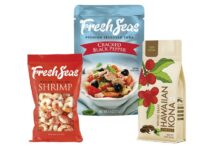The rise of global trade has significantly boosted the need for cold chain logistics to ensure the safe transport of perishable items and e-commerce products like pharmaceuticals, food, and beverages. A surge in consumer awareness and demand for fresh, high-quality food amplifies the necessity for advanced cold chain packaging, particularly in the thriving e-commerce and online grocery markets. As more premium products, which often have short shelf lives and higher temperature sensitivity, become available, the demand for proficient cold chain packaging providers grows accordingly.
The pharmaceutical sector also experiences a notable shift. Aging populations, a growing prevalence of chronic diseases, and the need for advanced healthcare systems drive a soaring demand for cold chain packaging solutions to safely transport temperature-sensitive medications. The demand for these packaging solutions has skyrocketed due to these factors.
In 2024, the temperature-controlled packaging industry, driven by increasing demand and expanding global networks, will evolve to offer more resilient, efficient, and competitive cold chain solutions. Let’s explore the anticipated trends in temperature-controlled packaging for 2024 and what e-commerce brands and their consumers can expect in the coming year.
1. Advanced Smart and Connected Packaging
The integration of smart technologies into packaging solutions is a trend that will keep growing. This includes the use of temperature-monitoring sensors, RFID tags, and IoT-enabled devices that provide real-time data on the condition of shipped products. These technologies ensure the quality of goods and enhance supply chain visibility. For perishable goods, expect an increase in packaging solutions with freshness indicators or sensors that monitor product quality to become more common in 2024. Technologies like QR codes and augmented reality (AR) integration will not only offer product information but also provide immersive experiences, leading to deeper brand engagement.
In 2024, there will be more investments in software to improve the visibility of the entire supply chain. Enhanced visibility will also enable better food traceability, a feature increasingly demanded by consumers.
2. Embracing Sustainable Packaging Solutions
Fast-moving consumer goods- FMCG companies are aligning their brand values to appeal to increasingly conscious consumers. The materials used in their packaging are under scrutiny. Beyond adopting reusable, recyclable, biodegradable, or eco-friendly packaging solutions to meet tough environmental, social, and governance- ESG goals, brands are leveraging eco-friendly packaging as a marketing tool to resonate with their target audiences.
3. Personalized Packaging Solutions
Packaging solutions tailored to the unique needs of different products, industries, and brands will offer a more effective and efficient approach to temperature control. In the e-commerce sector, flexible packaging that can adjust to various product sizes will become more prevalent, optimizing shipping and reducing waste.
Brands understand the power of brand recognition at every stage of the transportation journey. Cold chain packaging solutions that cater to individual brands’ needs, visions, and values—along with offering personalized packaging—will position e-commerce packaging providers for success in 2024.
4. Enhanced Collaboration with E-commerce Platforms
Closer collaboration between temperature-controlled packaging providers and major e-commerce platforms is anticipated. This ensures packaging solutions are optimized for the specific logistics and storage requirements these platforms demand, improving the overall efficiency of the supply chain.
The rise in e-grocery services, a trend that began in the early days of the pandemic, is expected to continue. E-commerce companies increasingly offer door-to-door grocery delivery. Temperature-controlled packaging providers capable of timely deliveries of perishable items, including vegetables, fish, and meat, will likely lead the market.
5. Adhering to Regulatory Compliance
The industry will likely focus on packaging solutions that meet and exceed regulatory requirements for the transport of pharmaceuticals, biologics, and other sensitive goods. Recent increases in food safety incidents and issues with counterfeit pharmaceutical products have led authorities to impose stricter regulations on the manufacture and transportation of perishable edible items.
6. Growth in Pharmaceutical E-commerce
Aging populations and related health issues will drive the growth of the pharmaceutical e-commerce industry, increasing the need for reliable temperature-controlled packaging solutions. The rising trend of healthy food items, such as probiotic supplements like kombucha, also demands dependable cold-chain packaging providers.
7. Advancements in Automation
Automation will continue to transform the landscape of temperature-controlled packaging in 2024 by enhancing efficiency and precision. The further integration of robotics in packaging processes is expected, which is vital for keeping up with growing demand. Automation reduces the risk of human error, enhances the speed and accuracy of packaging operations, and ultimately increases the overall reliability, scalability, and compliance of the cold chain at every stage.
In order to succeed in 2024, temperature-controlled packaging providers must go ahead and meet the e-commerce brands’ rising demand for bespoke, visible, automated, and sustainable packaging solutions. Innovation in these areas will support the expanding pharmaceutical, health food, and fresh food e-commerce industries. Effective solutions to meet changing consumer demands, tightening regulatory requirements, and expanding global networks will be crucial.
Temperature-controlled packaging providers must innovate to meet the growing demand for customized, visible, automated, and sustainable solutions. This innovation will support the pharmaceutical, health food, and fresh food e-commerce sectors, ensuring effective responses to consumer demands, regulatory requirements, and global network expansions.



























